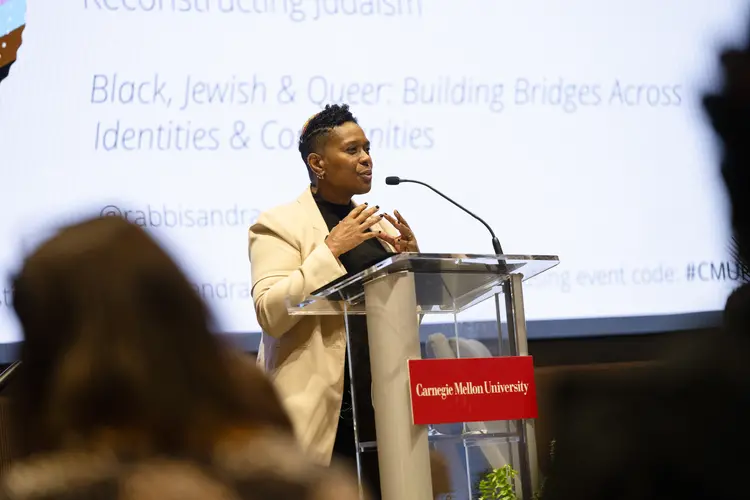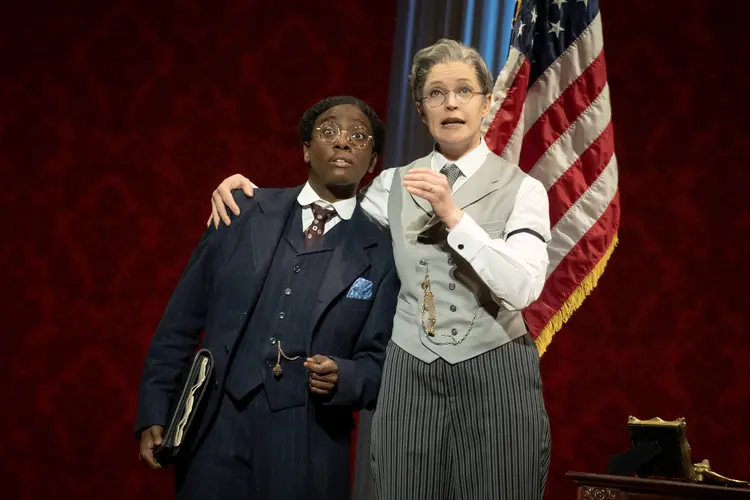
In Juneteenth Keynote, CMU Historian Outlines Harriet Tubman's Role in Civil War Raid
Media Inquiries
Restoring the humanity of freedom-seeking enslaved people is one of the things that motivates Edda Fields-Black(opens in new window) in her work as a historian.
After years of poring over documents and digitized files from more than 150 years ago, even through missteps and dead ends, she said she kept them at the heart of her work.
“Knowing that I’m going through this so that I can tell this story — that I can find and hear the voices of people whose voices we have not heard before — that would keep me going,” said Fields-Black, associate professor of history in Carnegie Mellon University’s Dietrich College of Humanities and Social Sciences(opens in new window). “They need me to be the vehicle through which these stories come to life, so I can’t get tired … I have to keep going.”
For CMU’s 2024 Juneteenth Keynote Lecture(opens in new window), hosted by Wanda Heading-Grant(opens in new window), vice provost for diversity, equity and inclusion and chief diversity officer, Fields-Black discussed the Combahee River Raid of 1863, which she calls one of the most dramatic episodes of the Civil War and the largest and most successful slave rebellion in U.S. history.
“Today, everything moves so quickly, and people are looking forward, but not necessarily looking back,” she said. “I want to encourage us to look back and hear those voices and learn those lessons, and use them to move forward.”
Juneteenth commemorates the end of chattel slavery in the United States on the day when the last enslaved people in Galveston, Texas, learned of their freedom on June 19, 1865.
The commemoration of that day and the story of the coastal South Carolina raid, Fields-Black said, are both part of a “long history of Black freedom in this country.”
An iconic abolitionist takes on duties as a spy
During the six-hour raid, abolitionist Harriet Tubman led a group of spies, scouts and pilots that freed 756 enslaved people and destroyed $6 million in property.
A year and a half before the raid, forces from the Union Army and Navy, including more than 40 warships, captured Port Royal, just south of the city of Beaufort.
“The planters on the Combahee, like the planters down in Texas, doubled down. Why? Because the rice was too profitable,” she said.
And if the planters knew change was coming — close enough that they had probably heard the battle when it happened — then so did the enslaved people.
“They knew, in a very large radius, that freedom was in Beaufort,” said Fields-Black.
Under the command of Union Col. James Montgomery, the raid was based on intelligence Tubman gathered as a spy for the U.S. Army Department of the South, ordered by the governor of Massachusetts.
However, Tubman’s service was not documented in military record, Fields-Black said.
“That’s not a surprise to me as a historian because, No. 1, she’s Black and, No. 2, she’s a woman,” Fields-Black said, adding that even though Black spies knew the landscape well and could go undetected, they were rarely named in commanders’ reports.
Fields-Black turned to Civil War pension records, spending several years researching the people involved in order to write “COMBEE: Harriet Tubman, the Combahee River Raid, and Black Freedom during the Civil War,” published in February.
Historic records hold a personal discovery
While working with the Center for Family History at the International African American Museum(opens in new window) in Charleston, South Carolina, she discovered a personal connection to it all: Her great-great-great grandfather Hector Fields was one of the 300 formerly enslaved men who enlisted in the South Carolina Volunteers, fought in the Combahee River Raid and risked his life for freedom alongside Harriet Tubman.
“One 200-page file opened up my family tree,” she said, adding that access to these pension records is now easier because they have been or are being digitized by the United States Colored Troops Pension File Project(opens in new window), which she also described in a New York Times column(opens in new window) in February.
“Historians need to get busy,” Fields-Black said. “How many other enslaved communities could we reconstruct just by digging into these pension files?”
The files are a largely untapped resource for a rich historical record because those seeking payments from the government after the war testified not only about their own or their loved ones’ military service, but also their families, relationships and other parts of their lives.
“As my daughter would say, they spilled all the tea,” Fields-Black said.
One formerly enslaved person, Minus Hamilton, became one of her favorite people that she discovered through the records. (“I shouldn’t have a favorite, but I do,” she said.) He was 88 years old when the gunboats came up the river and was among the hundreds to run along the rice-field dikes to escape.
She read an excerpt from her book that repeated from the pension records how, in Hamilton’s own dialect, he saw 10,000 bushels of rice go up in flames as the raiders set fire to a barn and the plantation house. But he was singularly focused on his freedom: “I was gwine to de boat.”
From the records themselves and the work Fields-Black has led researching and organizing the information within them, where previously there were only two major primary sources from which enslaved people tell their own stories directly, there are now three.
During the Civil War, about 500,000 formerly enslaved people liberated themselves, so while those who freed themselves during the Combahee River Raid represent only a portion of those people, each person’s effort represents a part of the history of Black freedom, Fields-Black said.
“It was our ancestors’ liberatory acts — not President Lincoln, not Congress, not even the Emancipation Proclamation — that made the destruction of slavery inevitable,” she said. “When freedom was not seized, it was often deferred, long delayed and denied.”


